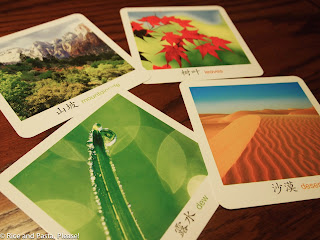Not quite the end of the school year and we find ourselves,
again, without Chinese teacher. Without going into details of the latest
debacle (although entertaining—or depressing—depending on how you look at it),
my husband and I have decided to try teaching our daughter, ourselves.
I’m sure my in-laws will squeal with joy (or slap their
foreheads, dumbfounded) when they hear this. They’ve been trying to convince us to teach both of our kids for
years. I don’t know what’s taken
us so long to give it a try. Maybe
we lacked confidence or motivation? But after three years, four teachers, and
hundreds of dollars of class fees, we’re finally ready to give it a go.
"But are we qualified?" the voice in my head asks.
I think so. My husband is a native Mandarin speaker, and I’m a lifelong
Mandarin student with many years of training (undergrad,
grad school, immersion programs, independent research….the list drones on…) and
some teaching experience, albeit in an entirely different field. So, I feel that we are qualified enough
to at least, like I said, give it a go.
With my best “can do” spirit, I dove into researching the
many different Chinese language textbooks on the market, and after about two
hours of staring at very similar-looking books, worksheets, and flashcards (all published in
China, Singapore, or Taiwan for native speakers), I realized that I was not
finding what I was looking for.
I wanted my daughter to learn Chinese like she learned other
subjects in school. Her school has
adopted a progressive program that stresses active learning experiences. Kids
learn about science, math, and language through thematic units during which
kids work on projects that teach and reinforce the new concepts.
For example, her class is raising chicks from eggs as part
of their new bird study. In addition to reading books about chick development,
the class read the handbook for the egg incubator. Later, they recalled the
important “rules” about caring for the eggs and the incubator from the
handbook, and worked in pairs to write these rules down on poster board for the
class to follow. Throughout the next weeks, the students will work in pairs to
care for the eggs and make sure that the rules are followed, up until the hatching of the eggs.
Now, I am searching for a Chinese language teaching method,
textbook, or teacher (whose approach I can model) that moves beyond flashcards and rote repetition, one that stresses creatively and actively
engaging students in learning experiences, motivates them to use language,
and then reinforces language concepts in a variety of different ways
(storytelling, poems, nursery rhymes, song, and drama.)
I’ve found bits and pieces of ideas online but I am still
searching for more.
I would absolutely love to hear your ideas!
- How do you (if you teach your child) or your child’s teacher actively engage your child in learning Chinese?
- What tools (textbooks, storybooks, websites, etc…) or strategies have you found helpful?

No comments:
Post a Comment